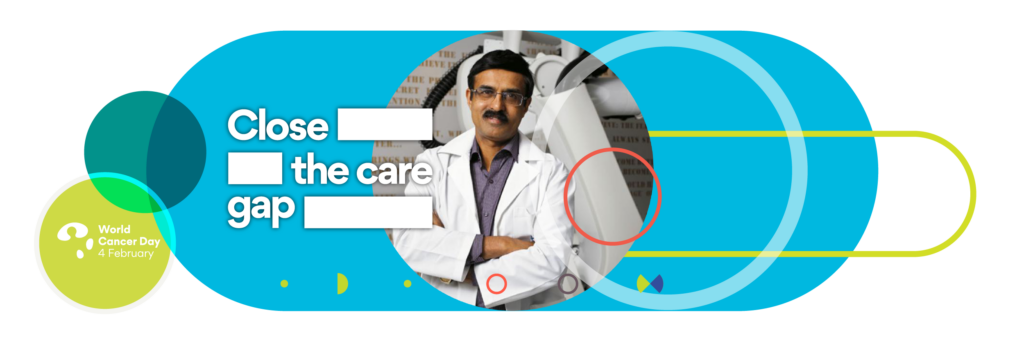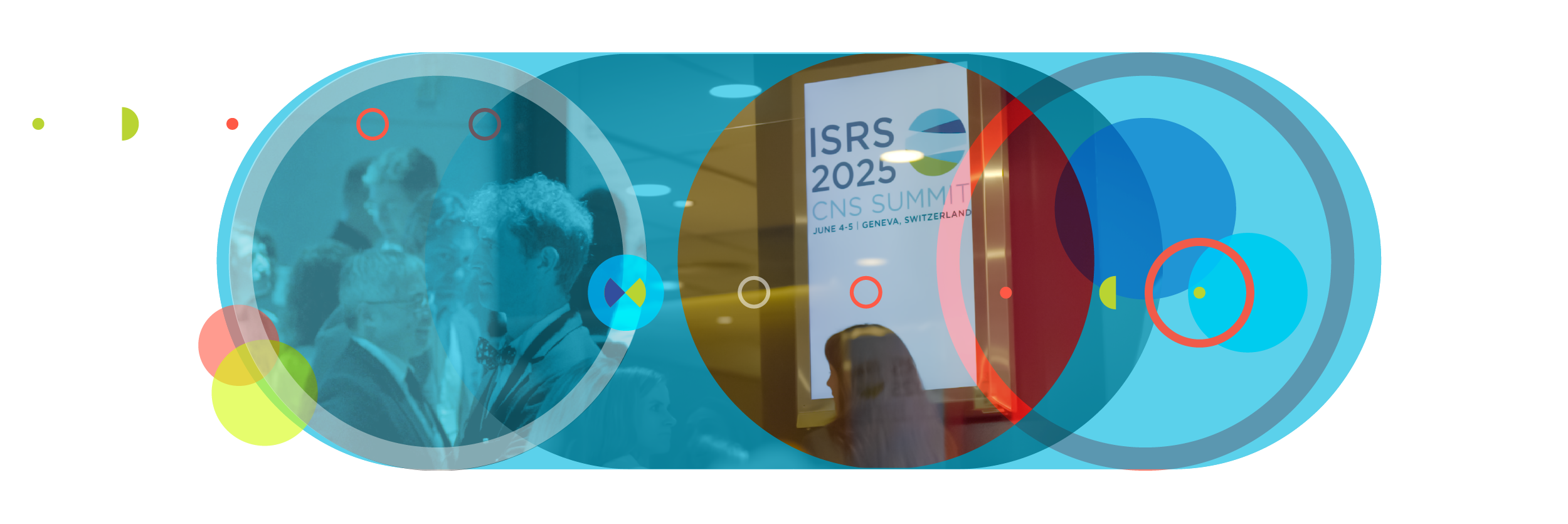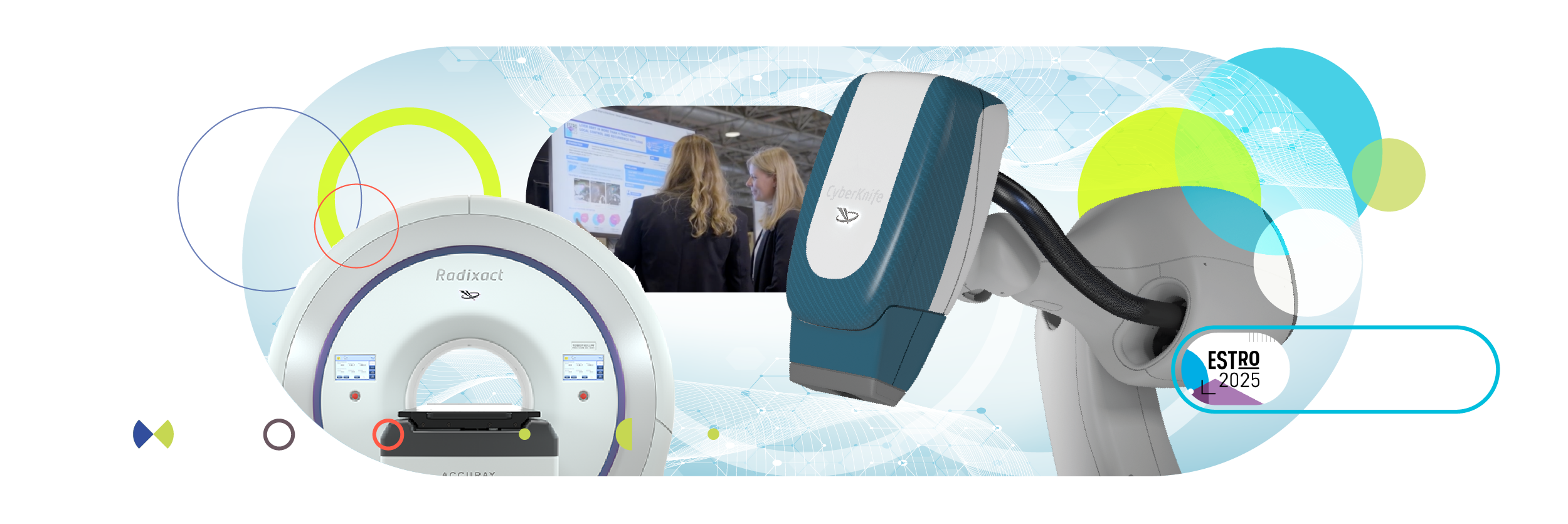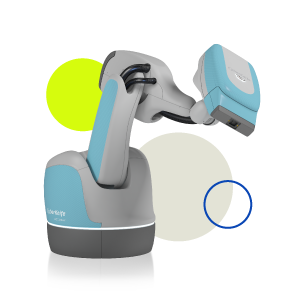To honor the call-to-action of World Cancer Day 2024—“Close the Care Gap”—Accuray sat down with a leading voice on cancer care equity to get on-the-ground insights: Dr. B S Ajaikumar, Executive Chairman at HealthCare Global (HCG) Enterprises Ltd., one of the largest comprehensive cancer groups in the world. Dr. Ajaikumar shared his perspective on the multi-faceted nature of the challenge, the essential role of more efficient and effective radiotherapy in bringing better treatments and outcomes to more patients, and where he sees social and technological change showing promising potential.
India as a microcosm for the global cancer care gap
With a rapidly growing population topping 1.4 billion in 2023, India presents a useful case study for health equity in cancer care. Nearly 70% of the population lives in rural areas,[1] while half of India’s oncologists practice in just 12 major cities.[2]
In 2003, Dr. Ajaikumar left an esteemed career in the U.S., including working at MD Anderson Hospital and Tumor Institute of the University of Texas, to return to India. “The reason I came back was because I saw the wide gap between India and the advanced countries,” he says.
Remote connectivity bridging physical gaps for patients
“I always say, Cancer is not a disease of convenience. A patient cannot say, ‘I will just stay in my neighborhood and take my treatment.’ Decentralized cancer care will always be a challenge. It is very difficult to replicate centers of excellence. But in my view, there is a place for local treatment: Once the protocol is established, the patient can go to their closest clinic in their hometown and continue to take their treatment.”
“Remote connectivity has helped us a lot in talking to patients in remote areas. Now, we always do a video call initially, so I can explain to the patient why they have to travel to get the treatment they need.”
“We’ve been doing remote consultations from diagnosis to treatment planning since 2008, but the pandemic made everybody more aware, and made patients more accepting. In the past, we would offer remote treatment planning and patients would decline. Now, they understand that I can do more or less the same thing remotely.”
Remote connectivity as a tool for providers
“These technologies are benefitting clinicians, too. Virtual tumor boards, for example, are doing extremely well. In the past, if I had to call a medical oncologist, neurosurgeon, radiation oncologist and molecular pathologist all together to discuss a patient and look at the radiographs, it would have taken several days. Now, within 10 minutes I can get all of them and look at the radiographs online.”
“Remote connectivity technology for remote planning, radiology and digital pathology means you don’t need experts at a local level. But when it comes to surgery and delivering radiation therapy, we are trying to see how we can use technologies to complement the local providers. For example, using VR [virtual reality] lenses allows our more experienced doctors to help colleagues in more rural areas during surgery.”
“We recently had a patient that refused to come in to a main treatment center. So, we used VR lenses. Our surgeon was sitting in Bangalore, directing the surgeon through the successful operation.“
“The recent 2023 World Cancer Equity Report underlines inequities in cancer services leading to delayed diagnosis and advanced stage cancer at presentation. Often, patients resort to poor quality or non-scientific treatment options that are cheaper and invariably worsen the prognosis. Sadly, this delay means that patients whose cancer could have been detected and treated early with current available diagnostics, medicines, and technologies, develop an incurable disease.”
“I think, in the future, this is what we are going to see—technology is going to help us to bridge the gap, because we can’t expect all patients to travel to the major treatment centers.”
“Today we can proudly say that, within 72 to 96 hours, we can get the biopsy report, imaging and start the treatment if recommended by our Multidisciplinary clinic”
Hypofractionation: a powerful tool in addressing access barriers
“Beyond technology advancement in the world of communication, the treatment delivery technologies available have implications for access as well. “We now use hypofractionation with a large number of breast and prostate cancer patients. Treating in fewer sessions cuts down the travel time of coming every day for weeks, and it also possibly gives a better outcome.”
“This kind of precision medicine using high-output machines is the future of radiation oncology. It will be a game-changer in terms of patient tolerance, outcomes, and also, of course, less stress and burden on the patient and the family.”
Hidden barrier: clinician understanding of advanced treatment technologies
“You’ll be surprised to hear that, in some cases, the barrier to better technology is not cost—and it’s not staffing, either. It’s a lack of understanding about the capabilities of this kind of unit.”
“For example, when I first brought the CyberKnife® System to India, people always thought of it like a regular linear accelerator. When I started saying, ‘Hey, I can treat prostate cancer in five fractions,’ there were a lot of nonbelievers.”
“Similarly, when we first started using the TomoTherapy® System, people said, ‘You can’t do more than 30 or 40 patients a day on the couch.’ We are doing 80 patients a day because we have mastered how we can use the efficiency built into the system—using remote planning to enable centralized radiation planning, for example.”
“I see the future of the technologies like CyberKnife and TomoTherapy Treatment Delivery Systems gaining more and more acceptance and replacing the conventional form of radiation.”
AI offers tremendous potential
“We are all talking about AI quite a bit right now. It will help us to bring more precision and more hypofractionation through capabilities like auto-contouring.”
“AI will also help with data analysis. Suppose I have 10 patients, and in five of them, the tumor has shrunk by 50%. Why has the tumor shrunk in five patients, and not in the other five? I’ll be able to study those cases, and we’ll create an algorithm model possibly using Genomics as a base which we’ll use in the future to predict outcomes—I call it bucketing. Does this patient belong to bucket A, B, C or D? And based on that, we’ll treat the patient, rather than treating everybody the same way. We’ll treat the patient the right way the first time—making sure the dose is correct and the side effects are minimized. This could be a form of Radio sensitivity Index.”
What about AI bias?
“AI bias is certainly a consideration. That is why I have been telling our team, ‘Whatever data we get, it’s all Caucasian data. We have to generate our own data.’ In fact, you’ll be surprised to hear that 38% of the patients in our cohort have certain gene expressions which have never been reported.“
“We know the genetic makeup makes a difference in the treatment and the outcome. So, we will generate the data and do comparisons and see what the difference is. In five years, it will make a dramatic difference, because we will have our own data.”
Precision medicine depends on effective diagnosis— and addressing cultural barriers to screening
“I look at the precision medicine transformation like another major change: In the early 2000s, we were in a totally different space. We were just coming out of the cobalt era, and what we did at HCG is take the bull by the horns and say, ‘We are going to bring linacs.’”
“Today, the shift we need to see is proper analysis of the data to make sure the patient gets the right treatment—the first time. When you don’t give the right treatment to the patient and the disease comes back, the cost to treat that patient becomes comparatively high because they keep coming back for treatment. And more importantly, they may not even live.”
“So we are striving hard to really showcase why ‘first time—right treatment’ is actually more cost effective across the lifetime of a patient. Also, healthy patients are more productive, and they live longer, which is what the society wants. It’s not that often that the economic best interest aligns with the quality-of-life best interest—where doing the right thing is also going to save money on the long term.”
The overlooked factor: Changing cultural perceptions of cancer treatment
“If I think about cancer care in India 10 years ago? We’ve certainly seen great improvement. With treatment, there is a dramatic change in some states—areas where the quality of care has improved dramatically and become more accessible because of what the state government is doing there. Whereas if you look at certain other states [that aren’t implementing the same policies], the patients are not receiving the same high quality of care. The important thing is to collect data and showcase why certain states are doing better. That is what we, as a cancer care provider, have been trying to do.”
“But as oncology evolves toward more precision medicine, diagnosis is the key. Genomics become very important. Because maybe half of the patients won’t be treated properly if you don’t do complete diagnosis. One need to understand the actionable genes. What are the pathways? Which patient requires what targeted therapy?”
“A big challenge with diagnosis is cultural perception of cancer. Cancer—the word itself— Cancer means corruption. People talk about the cancer of a society. So, the implication of that on a patient is that cancer is a negative impact on the patients, so the terminology is important to make cancer a chronic disease.”
“But that is gradually changing based on education. More people are reading about cancer—they have access through their smartphones. And particularly in a country like India, word of mouth is very important. When people see that their neighbors or their friends are living for longer, that has brought very positive change to perceptions of cancer treatment. Some people use to think the treatment is worse than the disease, but that is changing.”
“So, we’re breaking these cultural barriers, to some extent. People are recognizing cancer is more of a chronic disease, rather than a death sentence. There are more people are coming forward for treatment, even at an early stage.”
“In the early 2000s, 70% of patients were coming with advanced disease. Today, it is reversed: 72% of the patients come with early-stage disease—particularly with breast cancer.”
“It is certainly a great improvement. But India has a massive 1.4 billion population. So, it’s a Herculean task. But again, we are moving in the right direction.” Dr. Ajaikumar says.
To learn more take a look at ‘Global Gaps in Cancer Care‘.
References
- https://www.seattletimes.com/nation-world/world/india-census-says-70-percent-live-in-villages-most-are-poor/
- https://www.thinkglobalhealth.org/article/india-needs-cancer-care-outside-its-big-cities
The views contained and expressed in this blog, are those of the author and do not necessarily reflect the views or policies of Accuray Incorporated or its subsidiaries. No official endorsement by Accuray Incorporated or any of its subsidiaries of any vendor, products or services contained in this blog is intended or should be inferred.









